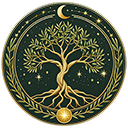The Tarot’s Major Arcana, with its 22 cards, represents a profound tapestry of archetypal symbols reflecting the human experience and the spiritual journey. Rooted in the rich cultural and historical contexts of Italy, the Major Arcana offers insights that resonate deeply with practitioners and enthusiasts alike. In this article, we will explore the Italian tradition of the Tarot’s Major Arcana, delving into its origins, meanings, and its significance within the broader spectrum of tarot practice.
Historical Roots of Italian Tarot
The origins of tarot can be traced back to 15th-century Northern Italy, where decks known as tarocchi were created initially for gaming rather than divination. Early decks, such as the Visconti-Sforza Tarot, showcased intricate artwork that reflected the cultural and political landscape of Renaissance Italy. These decks included what we now regard as the Major Arcana, which was once referred to as trionfi or “triumphs.” Over time, the Tarot evolved from a game to a tool of divination, particularly during the late 18th century when mystics began to explore the symbolic meanings of the cards. Scholars such as Antoine Court de Gébelin and Éliphas Lévi provided a framework that linked tarot to ancient wisdom, Kabbalah, and universal symbolism. Thus, the Italian tradition became a cornerstone in the development of tarot as a mystical and spiritual practice.
Understanding the Major Arcana
The Major Arcana consists of 22 cards, each imbued with rich symbolism and narrative depth. They depict significant life events, spiritual lessons, and archetypal figures that guide the reader and querent through the journey of life. Each card is typically numbered from 0 (The Fool) to 21 (The World), though variations exist among different decks.
Key Cards in the Italian Major Arcana
- The Fool (Il Matto) – Representing beginnings and potential, this card embodies the spirit of adventure and a leap into the unknown. It encourages exploration and spontaneity, reminding us of the importance of staying open to new experiences.
- The Magician (Il Mago) – Symbolising skill, willpower, and resourcefulness, The Magician asserts our ability to manifest our desires. In the Italian tradition, this card often illustrates the connection between the spiritual and physical worlds.
- The High Priestess (La Papessa) – As a guardian of intuition and hidden knowledge, The High Priestess invites introspection and spiritual awareness. She represents the subconscious mind and the mystery of life’s deeper truths.
- The Empress (L’Imperatrice) – A symbol of fertility, abundance, and nurturing, The Empress reflects the divine feminine and the creative aspects of life. In Italian art, she is often portrayed amidst nature, emphasising her connection to the earth.
- The Emperor (L’Imperatore) – Embodying authority, structure, and stability, The Emperor signifies leadership and control. He is often associated with the strength needed to create order in chaos.
- The Lovers (Gli Amanti) – This card embodies union, duality, and choices, focusing on relationships and the balance of opposites. It serves as a reminder of the importance of love and connection in our lives.
- The Chariot (Il Carro) – Symbolising triumph over obstacles and the will to succeed, The Chariot represents determination and control over one’s destiny. In Italian tradition, it evokes the idea of harnessing willpower to navigate life’s challenges.
- Justice (La Giustizia) – A representation of fairness, balance, and moral integrity, Justice reminds us of the importance of accountability and the consequences of our actions.
- The Hermit (Il Eremita) – Reflecting introspection and the search for inner truth, The Hermit encourages solitude and reflection. This card is especially significant in the Italian tradition, which values the wisdom that emerges from self-exploration.
- The Wheel of Fortune (La Ruota della Fortuna) – A symbol of cycles and fate, this card signifies the ever-changing nature of life. It serves as a reminder of both good fortune and challenges as part of the human experience.
- Death (La Morte) – Often misunderstood, Death represents transformation and the end of cycles rather than a literal ending. In Italian symbolism, it highlights the necessity for change and rebirth.
- The World (Il Mondo) – The final card in the Major Arcana, The World signifies completion, fulfillment, and integration. It represents the attainment of goals and the harmony of the universe.
Cultural Significance and Interpretation
In the Italian tradition, the Major Arcana of tarot is not merely a tool for divination; it serves as a lens through which practitioners can view their own experiences and spirituality. Each card is rich with cultural significance, drawing on Italy’s history, literature, and art. The aesthetic beauty of the Italian tarot decks, featuring vivid imagery and symbolic references, adds layers of meaning to the cards. Readers often interpret these cards through the lens of personal experiences, cultural narratives, and artistic expression, allowing for a dynamic interaction with the imagery. Furthermore, tarot readings in the Italian tradition often reflect the values of community and familial connections, embodying the notion that our journeys are interwoven with those of others. The readings may not only provide insights into individual circumstances but also explore the collective experiences that bind communities together.
Conclusion
The Major Arcana in Italian Tarot is a fascinating synthesis of history, culture, and spiritual exploration. Each card, brimming with archetypal significance, serves as a mirror reflecting universal human experiences and existential questions. As we navigate life’s complexities, the wisdom contained within the Major Arcana can guide our paths, reminding us of the profound interconnectedness of all life. By honouring the Italian tradition of tarot, we not only celebrate its historical roots but also engage with a timeless practice that continues to deepen our understanding of ourselves and the world around us. Whether you are a seasoned practitioner or new to tarot, diving into the Major Arcana offers a captivating journey of discovery and insight that transcends cultural boundaries.
